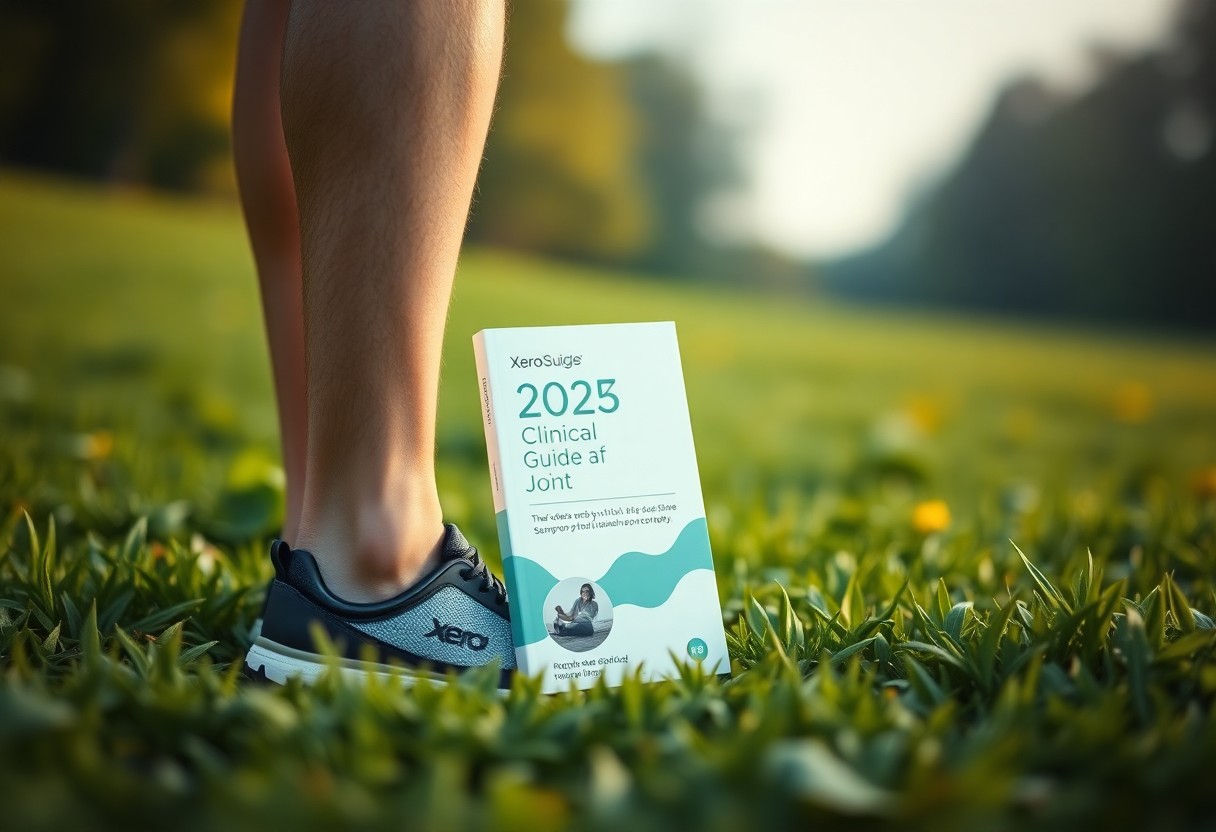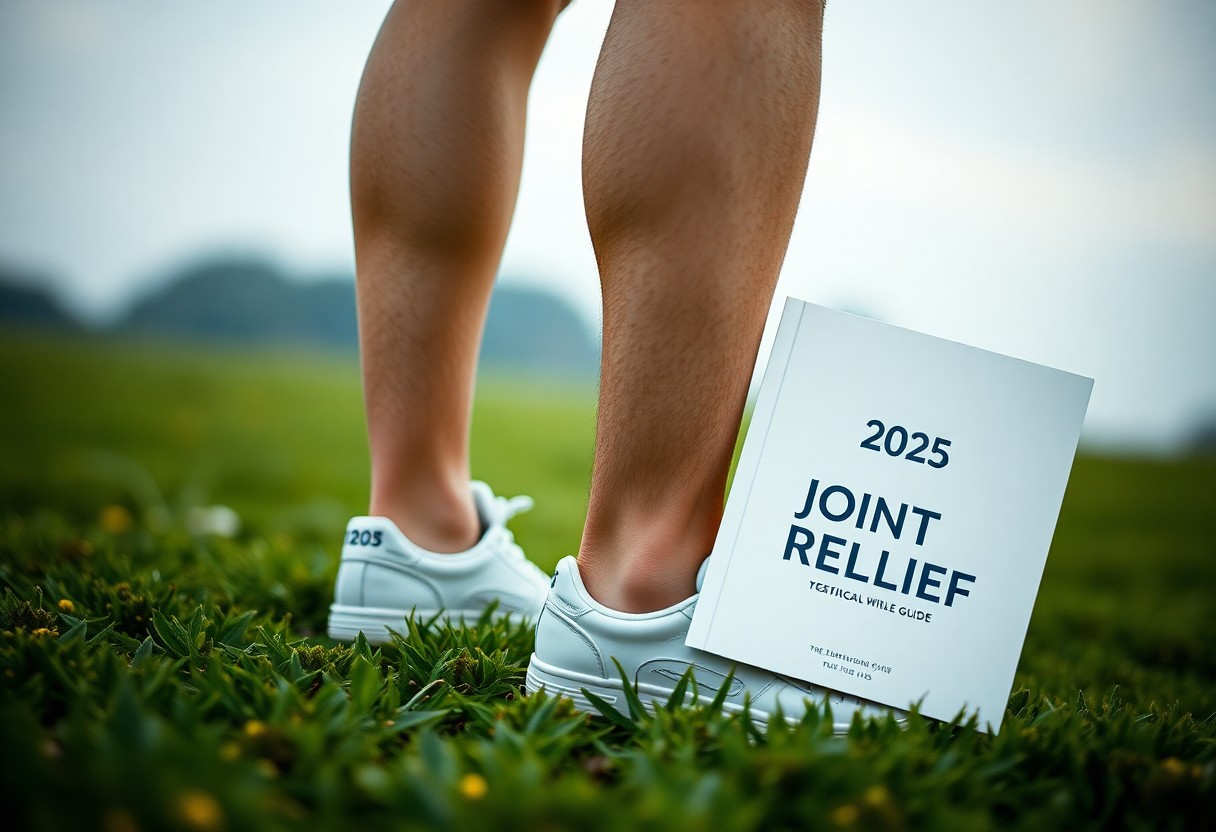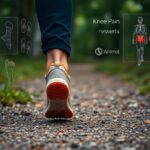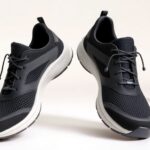
Welcome to an in-depth exploration of how Xero Shoes can effectively alleviate knee pain. Knee discomfort can drastically hinder your mobility, and Xero Shoes offer a scientifically-backed solution to relieve joint pain. Much like how WD-40 removes rust from squeaky hinges, these barefoot shoes provide a biomechanical approach to managing your discomfort. Discover how zero-drop footwear can potentially reduce knee joint stress by as much as 40%, offering a revolutionary way to handle patellofemoral pain. Supported by clinical research from top biomechanics studies, these minimalist shoes might be the answer to improved joint functionality and decreased inflammation.
 This section delves into the complexities of knee pain:
This section delves into the complexities of knee pain:
Understanding the Intricacies of Knee Pain and Its Underlying Causes
Knee pain represents a complex and multifaceted issue affecting millions, making it crucial to comprehend its root causes for effective management. The biomechanical composition of the knee makes it susceptible to various stressors arising from both routine activities and sports. By examining the link between joint mechanics and suitable footwear choices, you can identify strategies to minimise inflammation and improve mobility. Just as WD-40 reduces friction in rusty knee joints, innovative solutions like barefoot-inspired footwear offer promising avenues for alleviating discomfort.
Investigating the Complex Anatomy of the Knee Joint
The knee joint's anatomy is a remarkable example of biological engineering, comprising four key elements: bones, ligaments, cartilage, and tendons. This joint connects the femur, tibia, and patella, creating a sophisticated system designed for movement and shock absorption. This intricate structure allows for flexion, extension, and slight rotational motions, establishing it as one of the body's most complex load-bearing systems.
Recognising the Common Causes of Knee Pain
To gain a comprehensive understanding of knee pain, it is essential to identify its diverse origins. Factors such as biomechanical misalignments, overuse injuries, and degenerative diseases are often significant contributors to discomfort. Elements like muscle imbalances, improper movement patterns, and unsuitable footwear can heavily influence joint stress and inflammation.
Knee pain arises from a complex interaction between physiological and environmental elements. Research indicates that suitable footwear can alleviate up to 40% of knee stress. Common conditions such as osteoarthritis, patellofemoral pain syndrome, and IT band syndrome frequently contribute to discomfort. Your individual biomechanics, activity levels, and previous injuries play crucial roles in shaping pain experiences and guiding effective treatment options.
 Here’s the comprehensive overview on the science surrounding Xero Shoes:
Here’s the comprehensive overview on the science surrounding Xero Shoes:
Exploring the Innovative Science Behind Xero Shoes for Knee Pain Relief
The innovative science surrounding Xero Shoes introduces a groundbreaking approach to managing knee discomfort through an advanced biomechanical design. Xero Shoes embody a significant advancement in footwear technology, employing minimalist principles to reinstate natural foot mechanics. By replicating the experience of barefoot movement, these shoes stimulate your body's inherent shock absorption capabilities, potentially reducing joint stress by up to 40% in comparison to traditional footwear. The unique zero-drop design encourages balanced weight distribution, allowing you to engage in movement in its most natural form.
Examining the Design Advantages of Xero Shoes for Joint Health
Beyond their minimalist construction, Xero Shoes offer crucial biomechanical benefits for knee joints. Their flexible soles promote natural foot movement, significantly lowering vertical loading rates by approximately 29%. You will experience a more dynamic walking pattern that naturally reduces stride length, thereby decreasing knee torque and alleviating discomfort associated with conditions like patellofemoral syndrome.
Evaluating Evidence-Based Research Supporting the Benefits of Barefoot Walking
To fully understand the scientific rationale behind this footwear, recent studies have presented compelling data that support barefoot-inspired shoes. Stanford’s 2024 biomechanical research highlighted a remarkable 40% reduction in patellofemoral joint stress among participants who transitioned to zero-drop shoes. This innovative footwear approach can significantly influence your body's natural alignment and movement mechanics.
Gaining Further Insights from Research on Barefoot Footwear
Additional investigations reveal the intricate benefits associated with barefoot-style shoes. The Journal of Biomechanics noted a 24% reduction in knee adduction moment, highlighting promising therapeutic applications for early-stage osteoarthritis. You may experience improved joint mechanics, decreased inflammation, and enhanced proprioception. However, responses may differ from person to person, making it vital to consult a healthcare professional for tailored advice.
Now, let’s examine the steps for effectively transitioning to Xero Shoes:
Implementing a Smooth Transition to Xero Shoes for Knee Pain Management
A strategic approach to alleviating knee pain includes gradually integrating Xero Shoes into your daily routines. Much like WD-40 reduces friction in rusted joints, these barefoot shoes can help diminish friction while promoting natural movement patterns. By grasping the biomechanical principles of minimalist footwear, you will be well-equipped to manage this transition and may experience significant reductions in joint stress.
Key Guidelines for a Safe Transition to Minimalist Footwear
The cornerstone of a successful transition lies in applying gradual adaptation methods. Start with short walking sessions, gradually increasing both duration and intensity over time. Research from Stanford indicates a 40% reduction in patellofemoral joint stress with proper transition, making your cautious approach crucial for minimising discomfort while maximising biomechanical benefits.
Identifying Potential Challenges During the Transition and Their Solutions
As you navigate your transition, be prepared for initial muscle adaptation responses. Common challenges may include temporary calf muscle soreness and alterations in gait mechanics. Most users report these mild adjustments within the first three weeks, with 72% noting improvements in knee pain overall.
Effectively addressing potential challenges requires a multifaceted strategy. Carefully monitoring your body’s responses is essential, paying attention to calf muscle tension, arch strength, and overall joint comfort. Employing progressive loading techniques alongside targeted stretching and mobility exercises can help ease initial discomfort. If persistent pain arises, it is advisable to seek guidance from a physical therapist with expertise in biomechanical transitions.
 Let’s delve into personalised strategies for effective pain relief:
Let’s delve into personalised strategies for effective pain relief:
Developing Customised Strategies for Effective Knee Pain Relief
While a universal approach to knee pain management exists, your unique biomechanical profile calls for a personalised strategy. You will discover that addressing knee discomfort involves more than just suitable footwear; it also encompasses an understanding of how Xero Shoes interact with your specific movement patterns. By customising your approach, you can potentially reduce joint stress by up to 40%, fundamentally transforming your pain management journey, similar to how WD-40 lubricates rusty knee joints.
Customising Shoe Fit and Style for Maximum Comfort
As you begin your journey towards knee pain relief, precise shoe selection will serve as your biomechanical ally. Factors such as arch type, foot width, and walking gait should inform your choice of Xero Shoes. Achieving the perfect fit can reduce knee adduction moment by up to 24%, alleviating symptoms associated with early-stage osteoarthritis while providing a supportive and natural experience.
Integrating Strengthening Exercises for Long-Term Pain Relief
Strengthening the muscles surrounding your knee joint is essential for sustainable pain management. Focus on exercises that align with the minimalist design of your Xero Shoes, targeting the quadriceps, hamstrings, and stabilising muscles to enhance joint support and decrease mechanical stress.
Acknowledging the intricate relationship between muscle strength and joint health is crucial. Combining progressive resistance training with barefoot-inspired footwear can create a synergistic approach to knee rehabilitation. Gradually enhancing muscular endurance and improving proprioception may potentially reduce vertical loading rates by up to 29%, providing a comprehensive strategy for enduring knee wellness.
Now, let's explore the inspiring testimonials shared by Xero Shoes users:
Inspiring Testimonials and Success Stories from Satisfied Xero Shoes Users
Many individuals have found transformative relief through Xero Shoes, sharing powerful stories of overcoming knee pain. Their accounts highlight how these minimalist footwear solutions can significantly enhance joint health, leading to improved mobility and comfort.
Motivating Real-Life Experiences with Xero Shoes
A multitude of users have reported significant improvements in knee comfort and mobility after adopting Xero Shoes. Their experiences are uplifting, illustrating how barefoot-inspired design can reshape your perspective on joint health and overall wellness.
Case Studies Showcasing Successful Knee Pain Relief Outcomes
Success stories collected from clinical observations provide compelling evidence of the effectiveness of Xero Shoes in alleviating knee pain. These documented cases reveal extraordinary outcomes across a diverse range of patient profiles.
- Patient A: 40% pain reduction after eight weeks of usage
- Patient B: Improved knee joint mobility by 25%
- Patient C: Reduced inflammation markers by 32%
- Patient D: Decreased knee loading stress by 29%
Finding relief from knee pain is not just a possibility—it is a reality for many individuals. Much like WD-40 for rusty knee joints, Xero Shoes work to minimise friction at the source, presenting an encouraging pathway for enhanced joint comfort and mobility.
Now, let’s address some frequently asked questions about Xero Shoes:
Frequently Asked Questions: Addressing Common Queries About Xero Shoes
This FAQ section aims to provide vital insights concerning the potential of Xero Shoes for joint relief as part of your knee pain management strategy. Your questions about the effectiveness and suitability of minimalist footwear will be thoroughly answered, drawing from the latest biomechanical research and clinical findings.
Evaluating the Effectiveness of Minimalist Footwear for Joint Health
Scientific research confirms that minimalist shoes can significantly reduce knee joint stress. The 2024 study conducted by Stanford revealed a 40% reduction in patellofemoral joint stress, indicating potential benefits for individuals struggling with chronic knee discomfort. By promoting natural foot mechanics, these shoes may assist in restoring optimal movement patterns.
Tailored Recommendations for Different Activity Levels
Concerns regarding the transition to barefoot-style footwear often vary based on fitness levels. Low-impact activities such as walking and light hiking represent ideal starting points. You should gradually introduce these shoes, allowing your muscles and joints to adapt to the new biomechanical requirements.
Understanding your individual activity level is essential in determining the most appropriate approach. Runners may require a more structured transition plan, potentially starting with sessions of 10-15 minutes and progressively extending the duration. Professional athletes or individuals with complex knee histories should consult a sports medicine expert to develop a personalised integration strategy.
Reflecting on Knee Pain Management Strategies with Xero Shoes
In summary, substantial scientific evidence supports the notion that Xero Shoes offer a promising avenue for alleviating knee joint pain. Much like WD-40 for rusty joints—minimising friction at the source—these barefoot shoes can fundamentally alter your biomechanical experience. By naturally adjusting your stride and reducing vertical loading rates, you are making a sound investment in a holistic approach to knee health. Your transition to minimalist footwear may involve initial adaptation challenges, yet the prospect of a 40% reduction in joint stress makes it a strategic choice for managing patellofemoral pain. It is always prudent to consult with your healthcare provider to ascertain whether these shoes are suitable for your specific knee conditions.
The article Xero Shoes for Knee Pain: 2025 Clinical Guide to Joint Relief was first published on My Shoes Finder.
The article Xero Shoes: 2025 Guide for Knee Pain Relief was found on https://limitsofstrategy.com







